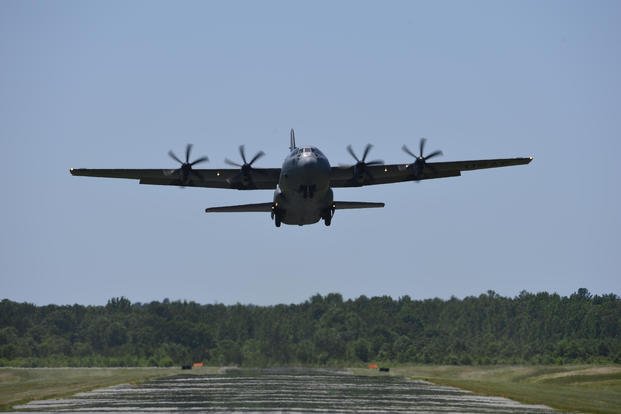Are manufacturers working on the Lockheed Martin-made C-130J Super Hercules being exposed to hazardous chemicals? One senator wants to know, and he's asking the Defense Department to investigate.
Sen. Chuck Grassley, a Republican from Iowa, has urged the DoD Office of Inspector General to look into recent whistleblower allegations that Lockheed is sealing the aircraft's internal fuel tanks in an unsafe manner, according to a Jan. 22 letter sent to Glenn Fine, the principal deputy Inspector General.
"The whistleblower alleges that Lockheed has been applying a chemical used for sealing the
C-130J's integral fuel tank in an aerosol form that is not listed in the chemical manufacturer's approved methods," Grassley said. The letter was first reported by Bloomberg News.
The chemical in question is PR-148. The sealant is "a one-part compound suitable for application by brush or clean gauze," according to its maker, PPG Aerospace, which does not mention using the chemical in aerosol form.
Related: Air Force Ends Purchase of Pricey Coffee Cups After Senator Complains
"The application of this chemical, by this method, may have long-term consequences for those applying the chemical as well as others involved in the manufacturing process nearby," Grassley wrote. "To that end, several other whistleblowers have reached out to my office asserting that these health concerns were initially ignored by Lockheed, and those with potentially connected health issues were pushed aside when their concerns were raised."
A Lockheed Martin spokeswoman said the concerns have already been addressed.
“The health and safety of our Lockheed Martin employees in the workplace [are] always of paramount importance," Stephanie Stinn said. "In regard to the application of a sealant used in the C-130J tank production process, we conducted both internal and external investigations, and it was determined that employees were operating within occupational safety standards for production processes including this sealant application process. A team from the Occupational Safety and Health Administration validated these findings.”
The most recent model of the four-engine military transport aircraft initially went into production in 1997. The first J-model entered active service in the Air Force in 2004, with a variety of missions adopting the aircraft. The Marine Corps also flies the KC-130J, using it primarily for aerial refueling.
Grassley did not detail the employees' symptoms or side effects from using the chemical. But according to his letter, the workers allege they were exposed to "so many particles" because spraying the chemical within the production facility created a "large blue cloud."
"Employees both spraying the plane and in other parts of the facility would be exposed to and inhaling what amounts to industrial-strength airplane glue," Grassley said.
The senator noted the need for the C-130J, which was brought into the military to replace aging Hercules models. The J can take off and land at shorter distances; it can also fly faster and cruise higher, getting troops downrange or delivering supplies in a timely manner.
"The C-130J is a pivotal upgrade to the C-130, the U.S. military's preeminent forward
operating fixed wing transport aircraft. As such, Congress must ensure the aircraft is safe, capable of fulfilling its missions, and not a health risk to those who build and maintain it," Grassley wrote.
The senator expects the DoDIG to conduct an investigation into the procedure and whether the practice has been rectified. He also wants to know whether the Pentagon's relationship with Lockheed Martin "may have affected the oversight of this matter."
"These allegations raise questions about DoD's ability to conduct oversight of its contractors, and a potential culture of coziness between defense contractors and those at DoD charged with overseeing them," he wrote.
-- Oriana Pawlyk can be reached at oriana.pawlyk@military.com. Follow her on Twitter at @Oriana0214.
Read more: Prospective Army Battalion COs Must Now Face Senior Officer Grilling, Psych Review













